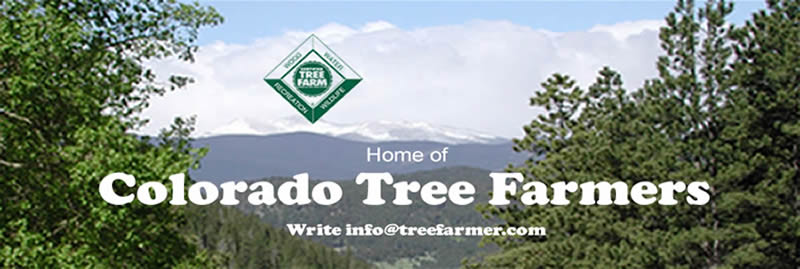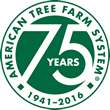| Be confident that what you do in your forest will improve it's health and sustainability for future generations. Become a Tree Farmer! |
|||
| Tree Farmer Alert | |||
| Monday, June 12, 2017 Over 800 readers and growing! |
|||
What's in your Woods?Be a winner in the Wisest Woodcutter contest by choosing the most correct answers in "Whats in your Woods?" over the next year. See details.
|
|||
|
|||
Tree Farm Recognitioncontributed by Dan Wand
|
|||
· The Colorado State Tree Farm program is currently undergoing a “third-party assessment” to evaluate and verify the program is being implemented in accordance with the Tree Farm “certification standards of sustainability”. The American Forest Foundation with assistance from PricewaterhouseCoopers is reviewing Colorado’s delivery of the program. Ten Tree Farm properties on the front range were randomly selected to participate in the assessment this year which includes a review of their forest management plans and on-the-ground management activities. · The Colorado State Tree Farm Committee has selected their recognition awards that include: o Tree Farmer of the Year: John Janowski, Pagosa Springs, Colorado (Note: John is currently serving as Chair of the Colorado State Tree Farm Committee, as well as being active on the local and national scene of the American Tree Farm System. Stay tuned for more information on a recognition meeting at the Janowski Tree Farm in Archuleta County later this summer) o Logger of the Year: Mike Jolovich, Windy Gap Logging, Granby, Colorado o Tree Farm Inspector of the Year: Kathryn Hardgrave, Assistant District Forester on the CSFS Salida District Congratulations – Recognition Well Deserved!
|
|||
Inside the firestormNew technology allows scientists to see the forces behind the flames.contributed by Jon Bell, forest Manager and Inventor
|
|||
I came across an article which takes the science of wildfire further than I’ve ever seen before, and explains a lot of the violent and unpredictable behavior of the large forest fires we’ve been having. It is well worth the read.
|
|||
Student developing new pine beetle predators
|
|||
The beetle’s population has declined locally, but scientists are continuing to study the tiny insect in preparation for the next epidemic. “The bark beetle and its natural enemies spend most of their life cycle under the bark of trees,” said Larry Haimowitz, who is working on a master’s degree. “It’s an enormously difficult system to study. It’s very difficult to figure out a way to get at the information you want about these insects when most of what’s taking place is taking place inside the bark of a standing trees.”
|
|||
American Trees Are Moving West, and
|
|||
As the consequences of climate change strike across the United States, ecologists have a guiding principle about how they think plants will respond. Cold-adapted plants will survive if they move “up”—that is, as they move further north (away from the tropics) and higher in elevation (away from the warm ground). About three-quarters of tree species common to eastern American forests—including white oaks, sugar maples, and American hollies—have shifted their population center west since 1980. More than half of the species studied also moved northward during the same period.
|
|||
Forest Ag Program Updatecontributed by Dan Wand, CSFS
|
|||
· After receiving input from forest-ag participants, county assessor offices, and CSFS & Consulting foresters last year, a CSFS review team has been working over the winter to incorporate all feedback and to make recommendations to the State Forester. The review report should be finalized in the near future. A “Forest-Ag newsletter” was recently sent electronically to all participants (If you did not receive a copy please let me know and I will forward you the link). This is the first thorough review with stakeholder input since the program became available beginning with the 1991 tax-year. Some anticipated results of the review that will guide the program in the future include: o Anticipate updated/revised electronic forms to be available for the 2018 tax-year. o The annual inspection fee has been modified from [$60 + $1.50 per forested acre not to exceed $600.00] to [$100 + $1.50 per forested acre not to exceed $500.00]. o Forest Management Plan Guidelines are being updated and revised. o Program policy & guideline documents are being updated and revised.
|
|||
|
|||
If this email was helpful,
|
|||




 the road, behind the green and white Tree Farm signs and we care about what's happening in our forests.
the road, behind the green and white Tree Farm signs and we care about what's happening in our forests.